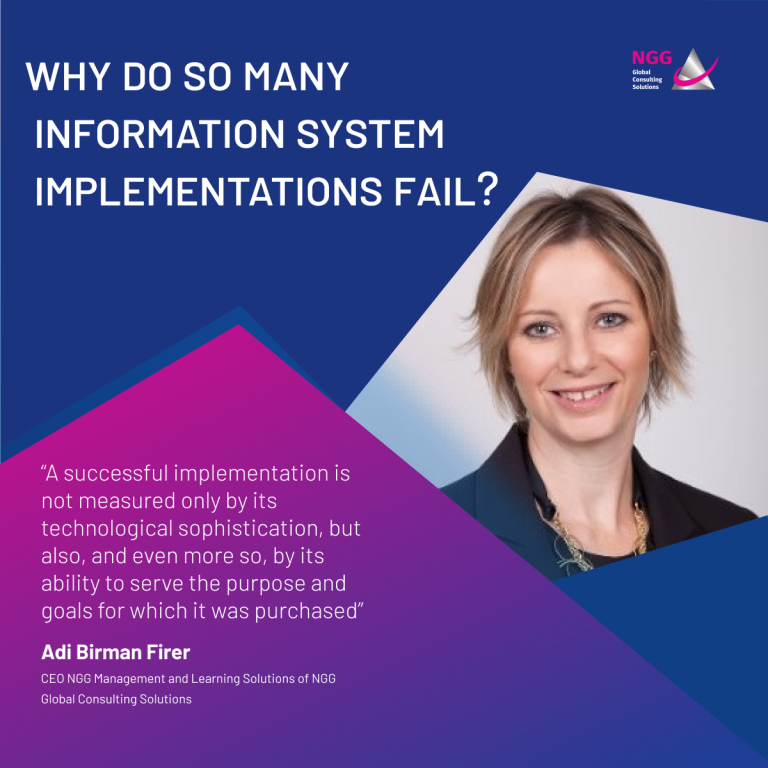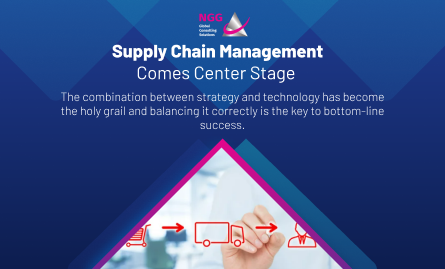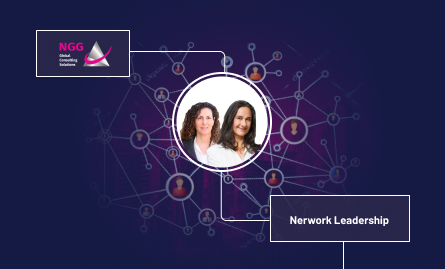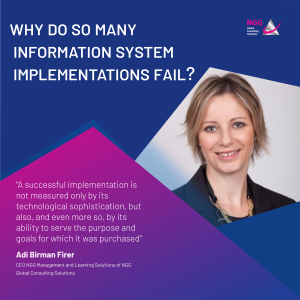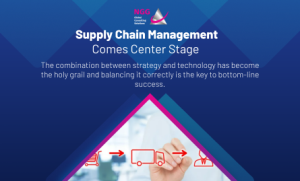Not just technology: implementing expensive technology in organizations requires taking care of the human factor.
Meaningful technological tools with the potential for improving work, output, and profit – are being underutilized due to mismanagement of implementation and application. NGG Global Consulting Solutions developed a comprehensive methodology to deal with this issue, which includes addressing the human factor as well as connecting the new technology to the organizational strategy.
Organizations today are in the midst of multidimensional disruption stemming from the change and dynamics in business environments, processes, and the human factor. When approaching the implementation process of new information systems in the organization these disruption elements need to be considered and addressed, whether it is a CRM platform, ERP, an inter-organizational communication channel with explainer videos, or automation tools – their introduction to the organization can be good or problematic, based on the implementation process, led by management.
“A successful implementation is not measured only by its technological sophistication, but also, and even more so, by its ability to serve the purpose and goals for which it was purchased”, says Adi Birman Firer, CEO NGG Management and Learning Solutions of NGG Global Consulting Solutions. The company specializes in consulting organizations on implementing management systems and transformation processes. It is involved in all steps of those processes, from planning implementation – developing a plan and supporting tools needed for the implementation and facilitating the implantation itself.
“Organizations purchase expensive technologies loaded with potential, but they do not fulfill this potential due to limited resource allotment of the implementation process”, says Birman-Firer. “Those interested in maximizing the benefits should remember that making a technology system useful is a transformation process”. We see a phenomenon of organizations that emphasize buying or developing new, innovative, sophisticated technologies but no attention is placed on time, funds, and user training. A failure of implementation is not rare, and often is not derived from the quality of the system but from a mismanagement of the implementation system and not enough attention given to the human factor – the user. To create a situation where the expansive system that was purchased, probably due to real and immediate need, provides the most benefit – thought and attention should be placed on time and resources on users, process, and organizational culture. This is often more expensive than the system itself but should not be skipped if we want to see results.
Implementation is not a one-time event
What are the main challenges in implementing a new system in an organization? According to Birman-Firer the main factor is the human one. “We often meet people who are suspicious and mistrusting of new systems, whether it is because of a previous painful experience or a natural hesitancy about change. For example, an employee who is used to work manually for years is introduced to automation and their immediate thought is to wonder if they will eventually be replaced by that system. Sometimes it is more innocent: Workers simply don’t have the time and attention span to learn something new. They have a million other things on their mind”.
“The second aspect is that system applications that are not connected to organizational processes” She adds. The implication of that is detrimental to the use of the system and sometimes causes damage because of complicating processes or creating parallel processes. The third aspect is the lack of goals and strategy. When we approach these types of changes we need to keep the bigger story in mind. If it is not there or is not connected to the strategy and business focus, it is hard to engage employees with the change, which creates a significant challenge.”
After identifying the challenges – how do we solve them?
It is recommended to set guiding principles for the process. Each step should connect to the greater story of the organization and its narrative. Another principle is creating transparency in the implementation process and crafting communication that clearly explains each step. Communication should go two ways between decision-makers and users. It is important that users have space to express their opinions and feelings. That is how you gain cooperation. Another significant issue is leadership. Senior management should be present, part of the change, and show empathy and patience. An implementation should not be viewed as a one-time event, but as a process people need to go through.
To break it down into stages: first, you should create an organizational buzz, like any marketing process. Actually launching a campaign that communicates the change, creating a preview and explaining why it is happening. Messages about the advantages of the system to the organization ad workers.
That is the initial buy-in. After it, you should teach the employees how to use the system, train and guide them – slowly, patiently, and with a constant awareness of challenges and resistance. We recommend training “superusers” from inside the organization who will be implementation partners, inter-organizational agents of change. We also recommend creating support platforms – an organizational “Netflix” with video, text guides, and any other tool that will help embrace the new system. For certain systems, a Q&A forum where people discuss challenges, ideas, or tips related to using the system. This relates to understanding there is no one-size-fits-all solution – each employee has their own way of understanding and embracing the new system. So it is important to find a language that speaks to everyone
Building the range of tools and needs to manage the change
Birman-Firer emphasizes, that even after the implementation is formally completed, it is important to create organizational space: allow the teams to openly raise difficulties, needs, and corrections and synchronize what needs synchronizing.
How much does the nature of the system affect the nature of the process?
There can be new systems or apps implemented in the organization that have little meaning and do not require a strong response, but there are systems and tools that are significant. Sometimes there are types of systems, where there is little room for error (medical or financial systems for example).and so the implementation process must be successful. You make sure employees leave the old systems, get used to the new ones and use them correctly. In those cases, you need a high level of control and supervision. Sometimes employees use the system correctly but do not fully employ its potential. For example, if we have implemented a sophisticated new CRM system with artificial intelligence – employees might use it well enough to log customer and case details, but do not use the new feature of extracting insights from the data collected by the system. That means that a major tool, with the potential to improve work, output, and profit – goes unutilized. This case will justify specific training for those new features.
Where does NGG Global Consulting Solutions come into it?
We help with a comprehensive buy-in for all the functions in the organization for all steps in the process including execution, training, and breaking down resistance. We know how to talk to different organizational functions based on their different needs. We also know how to create the range of solutions needed to manage the change. We will expertly carry out the implementation, leading users to high proficiency, and just as important: since organizations often allocate little time for this, we can step in at the last minute. We are able to consult on the process at any stage, react fast, and quickly build the implementation program, develop the tools quickly and work at a rapid pace that meets the deadline.
In cooperation with NGG Global Consulting Solutions
Why do so many information system implementations fail?
Not just technology: implementing expensive technology in organizations requires taking care of the human factor.
Meaningful technological tools with the potential for improving work, output, and profit – are being underutilized due to mismanagement of implementation and application. NGG Global Consulting Solutions developed a comprehensive methodology to deal with this issue, which includes addressing the human factor as well as connecting the new technology to the organizational strategy.
Organizations today are in the midst of multidimensional disruption stemming from the change and dynamics in business environments, processes, and the human factor. When approaching the implementation process of new information systems in the organization these disruption elements need to be considered and addressed, whether it is a CRM platform, ERP, an inter-organizational communication channel with explainer videos, or automation tools – their introduction to the organization can be good or problematic, based on the implementation process, led by management.
“A successful implementation is not measured only by its technological sophistication, but also, and even more so, by its ability to serve the purpose and goals for which it was purchased”, says Adi Birman Firer, CEO NGG Management and Learning Solutions of NGG Global Consulting Solutions. The company specializes in consulting organizations on implementing management systems and transformation processes. It is involved in all steps of those processes, from planning implementation – developing a plan and supporting tools needed for the implementation and facilitating the implantation itself.
“Organizations purchase expensive technologies loaded with potential, but they do not fulfill this potential due to limited resource allotment of the implementation process”, says Birman-Firer. “Those interested in maximizing the benefits should remember that making a technology system useful is a transformation process”. We see a phenomenon of organizations that emphasize buying or developing new, innovative, sophisticated technologies but no attention is placed on time, funds, and user training. A failure of implementation is not rare, and often is not derived from the quality of the system but from a mismanagement of the implementation system and not enough attention given to the human factor – the user. To create a situation where the expansive system that was purchased, probably due to real and immediate need, provides the most benefit – thought and attention should be placed on time and resources on users, process, and organizational culture. This is often more expensive than the system itself but should not be skipped if we want to see results.
Implementation is not a one-time event
What are the main challenges in implementing a new system in an organization? According to Birman-Firer the main factor is the human one. “We often meet people who are suspicious and mistrusting of new systems, whether it is because of a previous painful experience or a natural hesitancy about change. For example, an employee who is used to work manually for years is introduced to automation and their immediate thought is to wonder if they will eventually be replaced by that system. Sometimes it is more innocent: Workers simply don’t have the time and attention span to learn something new. They have a million other things on their mind”.
“The second aspect is that system applications that are not connected to organizational processes” She adds. The implication of that is detrimental to the use of the system and sometimes causes damage because of complicating processes or creating parallel processes. The third aspect is the lack of goals and strategy. When we approach these types of changes we need to keep the bigger story in mind. If it is not there or is not connected to the strategy and business focus, it is hard to engage employees with the change, which creates a significant challenge.”
After identifying the challenges – how do we solve them?
It is recommended to set guiding principles for the process. Each step should connect to the greater story of the organization and its narrative. Another principle is creating transparency in the implementation process and crafting communication that clearly explains each step. Communication should go two ways between decision-makers and users. It is important that users have space to express their opinions and feelings. That is how you gain cooperation. Another significant issue is leadership. Senior management should be present, part of the change, and show empathy and patience. An implementation should not be viewed as a one-time event, but as a process people need to go through.
To break it down into stages: first, you should create an organizational buzz, like any marketing process. Actually launching a campaign that communicates the change, creating a preview and explaining why it is happening. Messages about the advantages of the system to the organization ad workers.
That is the initial buy-in. After it, you should teach the employees how to use the system, train and guide them – slowly, patiently, and with a constant awareness of challenges and resistance. We recommend training “superusers” from inside the organization who will be implementation partners, inter-organizational agents of change. We also recommend creating support platforms – an organizational “Netflix” with video, text guides, and any other tool that will help embrace the new system. For certain systems, a Q&A forum where people discuss challenges, ideas, or tips related to using the system. This relates to understanding there is no one-size-fits-all solution – each employee has their own way of understanding and embracing the new system. So it is important to find a language that speaks to everyone
Building the range of tools and needs to manage the change
Birman-Firer emphasizes, that even after the implementation is formally completed, it is important to create organizational space: allow the teams to openly raise difficulties, needs, and corrections and synchronize what needs synchronizing.
How much does the nature of the system affect the nature of the process?
There can be new systems or apps implemented in the organization that have little meaning and do not require a strong response, but there are systems and tools that are significant. Sometimes there are types of systems, where there is little room for error (medical or financial systems for example).and so the implementation process must be successful. You make sure employees leave the old systems, get used to the new ones and use them correctly. In those cases, you need a high level of control and supervision. Sometimes employees use the system correctly but do not fully employ its potential. For example, if we have implemented a sophisticated new CRM system with artificial intelligence – employees might use it well enough to log customer and case details, but do not use the new feature of extracting insights from the data collected by the system. That means that a major tool, with the potential to improve work, output, and profit – goes unutilized. This case will justify specific training for those new features.
Where does NGG Global Consulting Solutions come into it?
We help with a comprehensive buy-in for all the functions in the organization for all steps in the process including execution, training, and breaking down resistance. We know how to talk to different organizational functions based on their different needs. We also know how to create the range of solutions needed to manage the change. We will expertly carry out the implementation, leading users to high proficiency, and just as important: since organizations often allocate little time for this, we can step in at the last minute. We are able to consult on the process at any stage, react fast, and quickly build the implementation program, develop the tools quickly and work at a rapid pace that meets the deadline.
In cooperation with NGG Global Consulting Solutions
